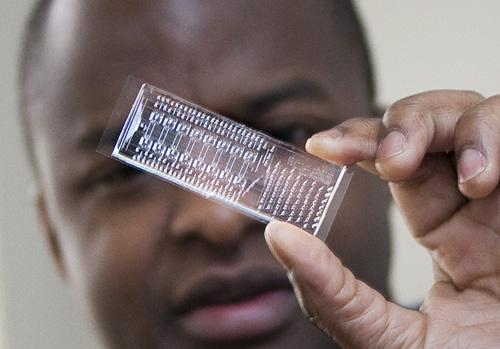The continued expansion of the pharmaceutical and biotechnology industry in North America, coupled with increasing incidents of cancer, HIV, and Alzheimer’s disease around the globe, has resulted in the growing need for more technologically advanced cell sorting techniques for microbial and disease identification. This need for better clinical diagnostic tools is even more apparent with the increasing threat of antibiotic resistant bacteria. However, high instrument cost coupled with an overall lack of technical knowledge and awareness regarding cell sorting continues to hamper the growth of this market.
Despite these largely avoidable setbacks, advancements in microfluidic systems have given researchers the ability to work with compartmentalized, droplet sized sample volumes. Using droplets not only cuts the cost of reagents but also gives researchers the ability to better maintain and control the cells within the sample as well as provide quantitative information. This allows for more reliable and cost-effective separation and sorting processes. As a result, researchers across a variety of disciplines will be able to better identify microbial organisms and combat the threat of disease.
LLNL's technology employs improved sorting strategies related to chip-based droplet sorting. This technology uses electromagnetic fields and non-contact methods to sort and identify monodispersed water-in-oil emulsion droplets in a microfluidic chip-based device. The system selects individual droplets from a continuous stream based on optical or non-optical detection methods as well as the droplets interactions with applied alternating electromagnetic fields. The droplets are then sorted to different channels which are created by the system’s array of electrodes. The system also provides for the fabrication of the array of electrodes that allow selection and diversion of one or more droplets from a continuous-flowing stream. This method may be paired with other on-chip processes to increase overall droplet sorting performance.
The figure shows a representative schematic of the technique. Several steps are involved in this process. First, the samples and the reagents are carried to step two where droplets of uniform size are formed. Next, the droplets proceed along the main flow channel where the sorting occurs by the electromagnetic field. Lastly, the droplets containing the material of interest will go to one of the channels and the rest will go to the droplets waste channel.
- Droplet sorting on microfluidic chip-based device
- Allows optical and non-optical detection methods
- Reliable and cost-effective sorting method
- Can be paired with on-chip processes
- Genetic screening for drug discovery
- Genome sequencing
- Food & beverage safety testing
- Biomedical diagnostics
- Forensics analysis
- Identifying and tracking infectious diseases
- Flow cytometry, PCR processes, Single-cell sequencing


